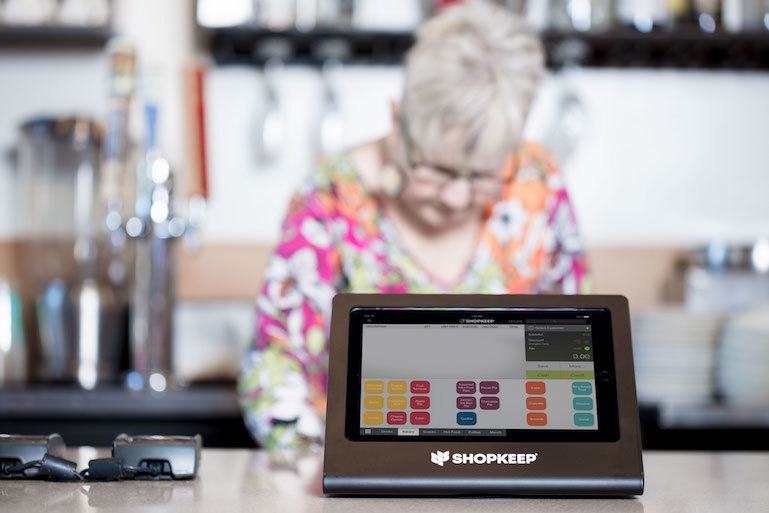
Everything You Need to Know About Improving Restaurant Efficiency
An efficiently run restaurant brings in more revenue than it spends. However, running a restaurant efficiently requires more than just financial savvy.
Efficient restaurants implement processes to avoid wasting energy, materials, time, money and efforts of the staff. Additionally, savvy restaurateurs understand that they need to build upon these processes to improve overall restaurant performance.
If you’re a new restaurant owner or an experienced one that’s looking for ways to improve your restaurant efficiency, then you’ll want to bookmark this post. We’ll dive deep into what efficiency means within a restaurant context, and give you practical tips for setting up processes that will help your restaurant be more efficient.
The True Cost of Inefficiency
Some telltale signs that you are running an inefficient business include declines in revenue, morale, quality, and reputation. The lack of a steady, skilled management team capable of establishing and sustaining superior standards, competent accounting processes, and competitive sales and marketing strategies rapidly deteriorates a restaurant’s level of efficiency and productivity.
It’s not just the systems in place you have to be aware of. Relationships between management and staff can be a huge influence on the atmosphere of your business. Tension and miscommunication cause confusion and frustration that can trickle down to customers. Although an inefficient restaurant may have the best food in the city, its model is unsustainable if internal issues exist.
Simple Ways to Improve Restaurant Efficiency
With all of that said, making your restaurant more efficient doesn’t necessarily mean a massive overhaul. There are simple, quick steps you can take in the short term, that when added up over time, result in a transformed business.
Here are a few ideas to help you get started:
- Hold weekly meetings to optimize communication among management and staff. Everyone should be encouraged to come to these meetings with insights, complaints, and suggestions.
- Reiterate the importance of quality customer service. Let waitstaff recommend menu items that will help you accommodate unique needs and customer requests. Empower and encourage your employees to exceed expectations.
- Create an incentive program for employees for a job well done. Awarding staff members with gift certificates, paid days off or bonuses is a great way to maintain morale, motivation, and pride in their workplace.
- Improve back-of-house and front-of-house restaurant efficiency by adopting a POS system that streamlines day-to-day operations. A quality system will enhance everyday processes such as taking orders and sending them to the kitchen or tracking inventory and monitoring crucial business insights.
- Re-evaluate table management. Make sure the staff knows how many tables are available at all times. Seating people as quickly as possible can significantly improve a restaurant’s reputation for addressing customer needs.
- Consider using a tablet-based system to enhance the customer experience. The innate mobility of table-based systems like ShopKeep empowers servers to open tabs and take orders from anywhere in the restaurant, cutting down wait times for patrons.
- Restaurants should have that “just scrubbed” look at all times. Pay special attention to the restrooms and exterior of the restaurant. As soon as a customer leaves, tables should be cleaned. Allowing dirty tables to sit tells customers you aren’t concerned about seating customers or your business’ cleanliness.
- Play around with color combinations, which are shown to increase food sales. For example, studies have shown that yellow, orange, and red stimulate appetite but excessive yellow hues can cause anxiety and encourage customers to leave.
Marketing to Increase Restaurant Sales
Just as important to a restaurant’s efficiency is the ability to brand in a way that makes it definitively stand out among other competing restaurants. Powerful branding strategies can deliver the following benefits to your business:
- Delivering a message that makes an impression on the public
- Substantiating the credibility of the business
- Connecting emotionally with customers
- Motivating customers to visit the business
- Establishing customer loyalty
Achieving these strategic objectives means that you have a well-oiled marketing machine that allows you to acquire new customers more efficiently than you could otherwise. Now, let’s look at some of the more tactical ways that you can execute marketing campaigns efficiently.
Email Marketing
Systematically sending messages in pre-calculated intervals builds and sustains consumer awareness about your restaurant and its services. It keeps customers engaged in what’s going on with your restaurant without being spammy. Once the campaign is developed and implemented, it takes little effort to maintain due to the advances in email marketing automation software.
Different kinds of emails can be effective for different reasons, as well. Maybe your customer would rather their receipt emailed to them. This is a convenience to them, but also gives you an extra opportunity to get their email address and follow up with an email asking how their service was or if they would like additional promotions. It’s also a good practice to reach out to customers who haven’t been at your business in a while to reignite their interest.
Be sure to set a clear goal when creating emails. Incorporate information about products and services. Make sure your emails convey that your restaurant is the customer’s best option. Enrich each email with links to blogs, videos or articles, and other content with the goal of building relationships with your customers.
Personalize each email with the recipient’s name and make an effort to use language that represents your restaurant. Your email won’t resonate with your audience if its tone doesn’t align with your brand’s voice. It’s also important to remember that there isn’t one set way to speak to your customers. For example, the tone used by an upscale, five-star restaurant won’t be the same as the one used by a fast food place.
SEE ALSO: The Small Business Guide to Email Marketing
Marketing with Online Content
Efficiency to many people today is being able to obtain information any time of day. Websites are accessible 24/7 and that means round-the-clock information for all kinds of customers. However, it’s not enough to simply create content. Instead, you need to do so in a way that aligns with how Google ranks and delivers results for a given query. In order to do that, you need to have at least a cursory understanding of how Google works under the hood.
Google consistently tries to keep its search results as relevant and informational as possible for its users. It does this by regularly updating its search algorithm. Google’s algorithm analyzes website content to detect two large issues: overly keyword-optimized content and uncovering content that is deceptive to the reader, i.e., the content is not consistent to the subject or product being touted by the website. By finding content that has these problems, Google is able to filter out low-quality content and show its users websites, articles, videos, and other content that answers their questions accurately.
This approach further shows Google’s dedication to getting the right information to everyone and how necessary it is that you play by Google’s rules when developing your content. Otherwise, you run the risk that no one will be able to find your website when using a search engine.
Search engines are not the robotic entities they were ten years ago. Blackhat SEO tactics that once worked to increase a site’s rank (albeit unethically and temporarily) are now grounds for being penalized by Google, which means your site will be removed from search results almost entirely. If you want to avoid this, you will need to replace stagnant content with fresh, informative content written by experienced professionals who know how to develop content in a clear way that the search engine can easily index.
In addition to creating great content, we also recommend that you get creative and build a website that aligns with your restaurant’s brand. Instead of just making a basic website to throw your food and beverage options on a screen, you can edit the font, background, and almost any other aspect to tell your brand story. Add a form for customers to sign up for those emails we discussed. Give them directions to your door. Add savory pictures of your most popular meals to increase your foot traffic.
SEE ALSO: How to Attract More Restuarant Customers on the Cheap
How Does a Restaurant Owner Know Their Customers are Happy?
Happy customers are returning customers. It’s as simple as that. Plus, it’s always cheaper and easier to retain an existing customer than it is to acquire a new one. So, customer happiness can be a major key to unlocking cost-efficient business growth. With that in mind, let’s look at some ways you can develop methods to communicate with your customers.
Even if your sales are steady and complaints only happen once in a while, how can you be sure of what your customers truly think about your business? Should you worry about reputation management because someone is slandering you on review sites? What actions should you take if customers are walking away unhappy and telling everybody about their less-than-satisfying experience except you?
Here are a few foolproof ways to effectively reach out and communicate with your customers:
1. Give customers the ability to fill out a survey onsite or on your website. People tend to more readily answer questions with multiple choice answers like “yes”, “no” or “no opinion” than respond to comment boxes. It’s not only easier cognitively for customers to answer straightforward questions, but they tend to be more honest with their answers as well. Include an incentive for completing a customer satisfaction survey, such as 10 percent off their order, to prompt them to take your surveys.
2. Enlist the help of a social media marketing company. Monitoring social media sites for comments and feedback about your restaurant business may be the best way to find out if your customers are happy. Since the average person spends over five years of their life on social media, chances are they are talking about their experiences with businesses they use. If you do get a not-so-stellar review, reach out to that commenter directly and offer a remedy to the situation.
Also, make sure your restaurant has its own social media handles. This gives your business a stronger online presence and can act as an instant connection to the customer. Many companies run promotions exclusively through their social media to drive online traffic and get customers excited about their business.
3. Host a soft opening. This is basically a test drive of the restaurant for your grand opening. Send out invites to whomever you choose and trust to be honest with you about your business. Be sure to include plenty of people who are a part of the audience you will be serving. You can get feedback constructively by preparing a questionnaire. Have a few questions about different aspects you know you want feedback on and provide space for additional responses.
4. Develop a local marketing campaign targeting customer feedback. This goes beyond the soft opening by providing you with feedback from a wider audience. Local marketing, or geo-specific marketing, uses content containing keywords and keyword phrases that incorporate city, state and zip code information. For local businesses and restaurants, this kind of marketing can center around incentive-based email campaigns asking customers for feedback on their experience with the restaurant. Local marketing strategies also increase the visibility of your restaurant on search engine results.
Understanding what kind of options your target audience is looking for and what they gravitate toward can help you focus within your business model. This information is key to help you understand what tools to put in place and how to implement them. This is about more than just food, though. Do your customers like paying directly with their phones? Do you find that none of them typically carry cash? Are you serving a type of food completely unique to the area? Keeping these more broad questions in mind can help you pick proper systems to use.
Knowing who your customer base is and what they want out of your restaurant helps you better understand the next point.
SEE ALSO: Here’s How to Keep Your Customer Retention Rate
Know Your Customers’ Eating Habits
Is there such a thing as the stereotypical, American quick-service customer? Should eating establishments cater specifically to customers adhering to this stereotype, i.e., children, teenagers, and older Millennials who scarf down tacos and fries with their eyes glued to their mobile devices? Industry experts say no. Let’s take a look at some of the larger demographic trends impacting the restaurant scene.
Ethnicities are a vital factor that’s influencing American eating habits. For example, African-Americans are expected to comprise over 15 percent of the U.S. population over the next 30 years. This group is spending almost 36 percent of their food budget on food prepared outside the home. Additionally, a report published by the Food Institute states that Hispanics spend nearly 40 percent of their food budget on meals purchased outside the home – an average of about $3,000 each year.
According to the U.S. Census World Population Clock, the population of the U.S is currently at 319,000,000, with one international migrant entering the U.S. every 40 seconds. The U.S. is highly urbanized and holding the third spot as the most populous country in the world. The spending power of these incoming residents is powerful. Restaurants would do well to develop initiatives that cater to this influential demographic or potentially suffer significant financial losses.
Millennials may be the ones bagging up your Big Mac and fries, but they sure aren’t the ones eating there. In fact, McDonald’s is actually worried about the fact that young adults are deliberately avoiding the fast food giant and are heading to Taco Bell, Panera, Chipotle, and Subway instead. Although surveyed Millennials say they want healthier food choices, this assertion contradicts their continued patronage to places like Taco Bell, where a recent flap over the ingredients of their hamburger has people wondering “where the beef” actually comes from.
All of this kind of information is crucial to a restaurant because knowing who your customer base is and how they eat is a big part of your marketing plan. Of course, the right tools can only make you more efficient. This may seem like an overwhelming amount of information, but putting the right systems and practices in place makes all of this easier than it looks.

Use a Point of Sale to Drive Greater Efficiency
Speaking of putting the right systems in place, one of the most effective ways to improve the efficiency of your restaurant is to use a point of sale (POS) system like ShopKeep. Here are some of the major ways this tool can take your business to the next level:
Faster Ordering – Modern POS systems feature easy to use interfaces that make it easy for staff to run even complicated orders quickly. Handy features like tab management and check splitting also take a lot of the complexity out of customer interactions.
Easier Marketing – Most POS systems will allow you to collect a customer’s email address when checking out, helping you build your email marketing list.
Automated Inventory Management – One of the most time-consuming aspects of running a restaurant is inventory management, but not with a POS. If you set up your inventory correctly, then every time you sell a dish or a drink, your inventory counts will automatically update, helping you stay on top of your stock levels.
Detailed Business Insights – One of the biggest benefits of using a POS system is the detailed reports and insights it can surface about your business. You can easily understand things like when you’re busiest, what dishes are your most and least popular, and who your best wait staff are so you can make informed decisions about marketing, inventory management, and staffing levels.
Mobile Business Management – Lastly, some POS systems also include smartphone applications that can help you stay on top of your business. Typically these apps don’t function as a full point of sale, but instead, make reporting and other business information available to you on the go. After all, what could be more efficient than checking in on the day’s sales while sitting poolside?
SEE ALSO: 10 Restaurant Management Apps We Love And You Will Too
At the end of the day, efficiency is just one part of the successful restaurant equation; however, it’s a big one. For a new business, keeping up with day-to-day operations might be all that you can manage. That’s where we hope this post has helped – by giving you practical tips that will help you get started with improving your restaurant’s efficiency. If you’re a food-service vet, then we hope at a minimum that this post has given you a few new ideas for streamlining your business.
Want to try ShopKeep for yourself?
Just answer a few easy questions.
Need help finding the right point of sale?
Just complete the form. We’ll call you right back to explain how ShopKeep can work for you.
Hit the ground running.Sprinting, in fact!
Read our free, comprehensive guide, Small Business 101, to learn all you need to know about starting a thriving business.

